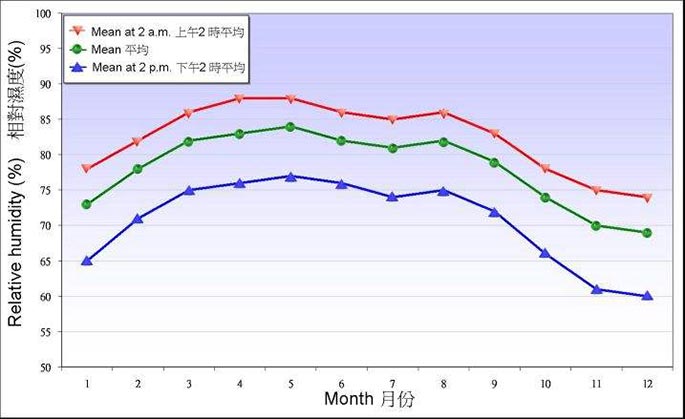1. Absolute humidity refers to the mass of water vapor contained in the air per unit volume, that is, the water vapor density in the air, in g/m3. There are three ways to express the amount of water vapor in the air: absolute humidity, moisture content and relative humidity.
2. Relative humidity refers to the ratio of the actual water vapor content in the air to the saturated water vapor content at a certain temperature, expressed as a percentage.
Difference between Relative Humidity & Absolute Humidity
1. Absolute humidity refers to the weight of moisture per unit volume of gas. Generally, mg/L is used as an indicator. Relative humidity is the ratio of absolute humidity to water vapor content at this temperature saturation expressed as a percentage.
2. Absolute humidity is the actual value of the weight of water vapor contained in a unit volume of air. Saturated humidity is the limit value that can contain water vapor per unit volume of air at a certain pressure and a certain temperature.
3. Absolute humidity refers to the amount of water vapor (gm.) in a unit volume of air at a certain temperature. Relative humidity refers to the ratio of the actual water vapor content to the saturation value in the air at a certain temperature. The percentage is expressed.
4. Water vapor content refers to the total amount of water in a certain volume of air. For example, the water vapor density is one of these magnitudes called absolute humidity. Relative humidity is the percentage of the actual water vapor content in the air sample and the water vapor content of the same volume of saturated air at the same temperature. It is the most common humidity value that can be directly observed.
5. The amount of water vapor contained in the unit volume of the gas mixture is referred to as absolute humidity. Relative humidity is the ratio of absolute humidity to the maximum humidity of fully saturated water vapor at a certain temperature, expressed as a percentage (%).
6. Absolute humidity refers to the number of grams of water in a water vapor state of 1 cubic meter. The maximum amount of water vapor that can be absorbed by 1 cubic meter of air is called the maximum humidity or saturation point. The maximum humidity depends largely on the temperature. .
7. Absolute humidity refers to the density of water vapor in the air, which is expressed by the weight (g) of water vapor contained in 1 m3 of air. The water vapor content is high and the absolute humidity of the air is high. There is a limit to the water content in the air. When the maximum capacity is reached, it is called the saturated water vapor content.

For inquiry and technical data sheet, please contact dry@chun-wang.com







All trademarks shown here are for reference purposes only. They are the property of their respective owners, and we are not authorized to sell items bearing such trademarks.
